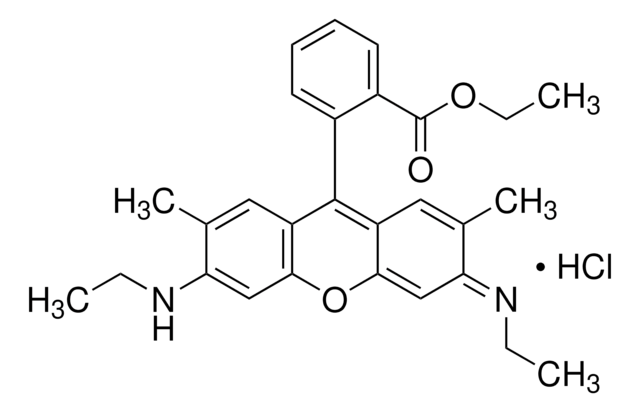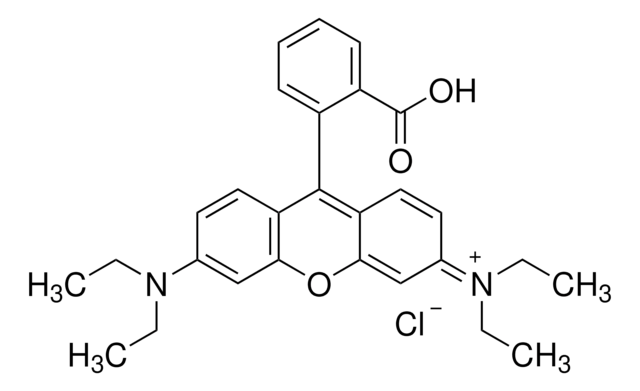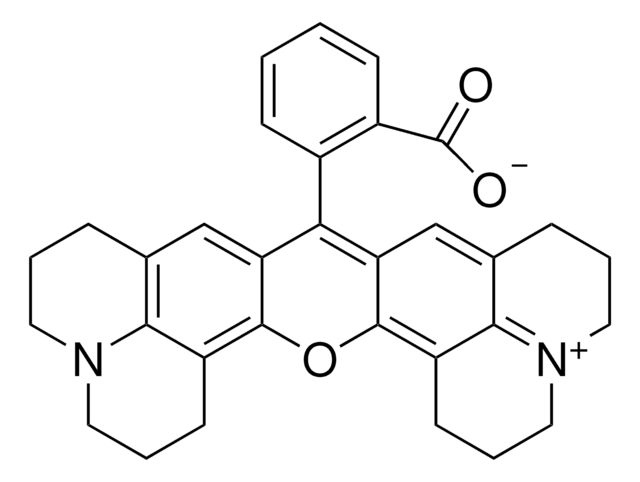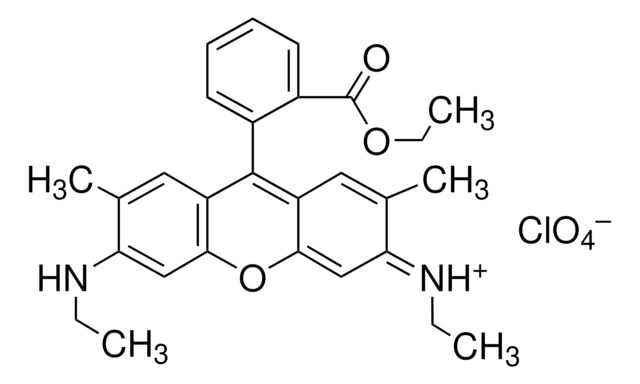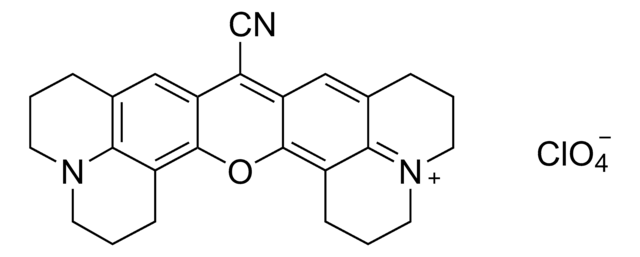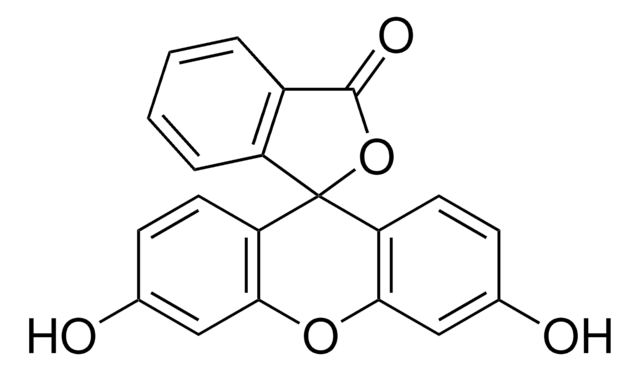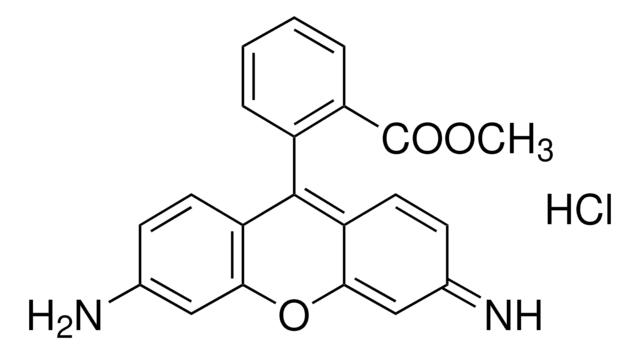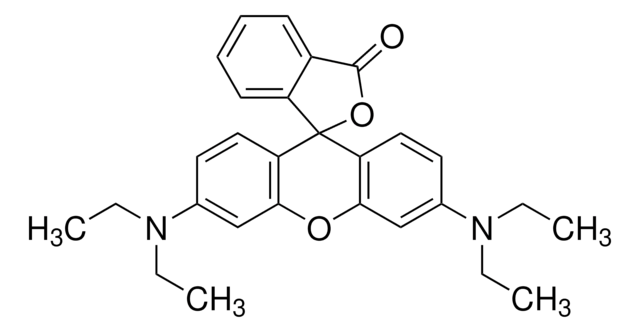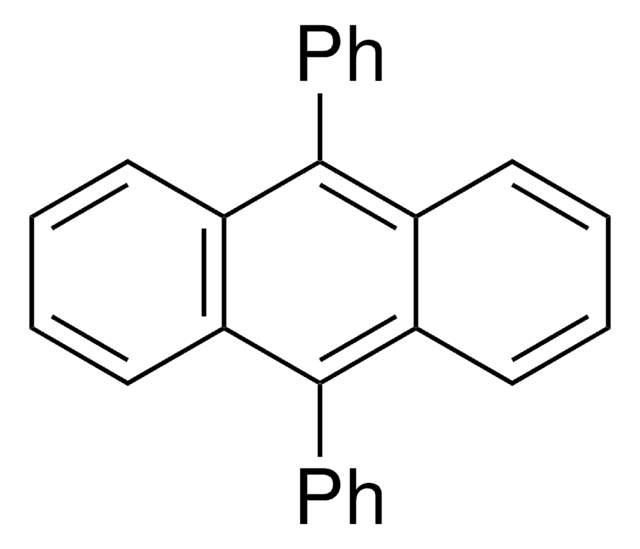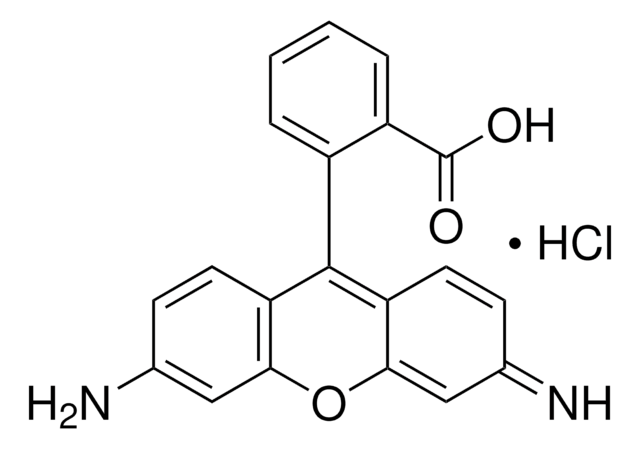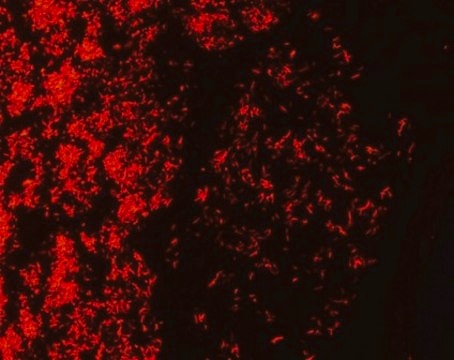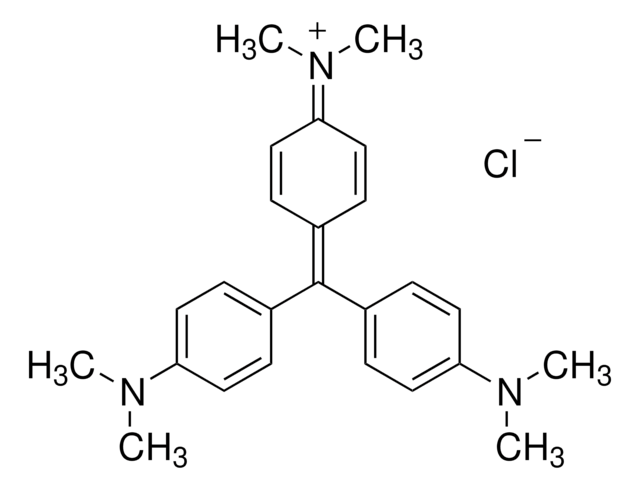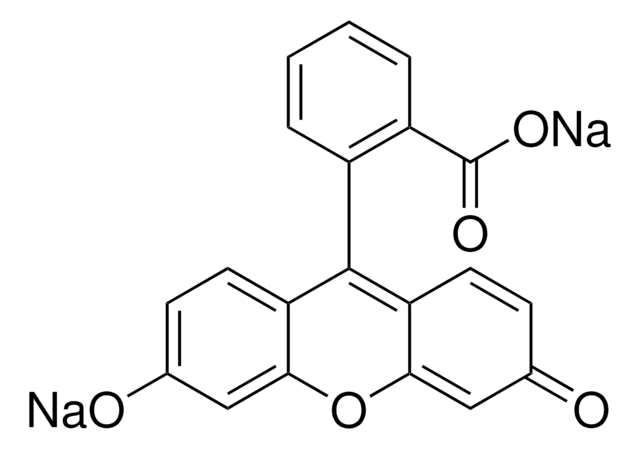56226
Rhodamine 6G
analytical standard
Synonym(s):
Basic Red 1
About This Item
Recommended Products
grade
analytical standard
Quality Level
assay
≥95.0% (HPLC)
shelf life
limited shelf life, expiry date on the label
technique(s)
HPLC: suitable
gas chromatography (GC): suitable
application(s)
cleaning products
cosmetics
food and beverages
personal care
format
neat
SMILES string
Cl.CCNc1cc2OC3=CC(=N/CC)\C(C)=CC3=C(c2cc1C)c4ccccc4C(=O)OCC
InChI
1S/C28H30N2O3.ClH/c1-6-29-23-15-25-21(13-17(23)4)27(19-11-9-10-12-20(19)28(31)32-8-3)22-14-18(5)24(30-7-2)16-26(22)33-25;/h9-16,29H,6-8H2,1-5H3;1H/b30-24+;
InChI key
VYXSBFYARXAAKO-WTKGSRSZSA-N
Looking for similar products? Visit Product Comparison Guide
Application
Biochem/physiol Actions
Packaging
signalword
Danger
hcodes
Hazard Classifications
Acute Tox. 3 Oral - Aquatic Acute 1 - Aquatic Chronic 1 - Eye Dam. 1 - Skin Sens. 1
wgk_germany
WGK 3
Choose from one of the most recent versions:
Certificates of Analysis (COA)
Sorry, we don't have COAs for this product available online at this time.
If you need assistance, please contact Customer Support.
Already Own This Product?
Find documentation for the products that you have recently purchased in the Document Library.
Customers Also Viewed
Our team of scientists has experience in all areas of research including Life Science, Material Science, Chemical Synthesis, Chromatography, Analytical and many others.
Contact Technical Service